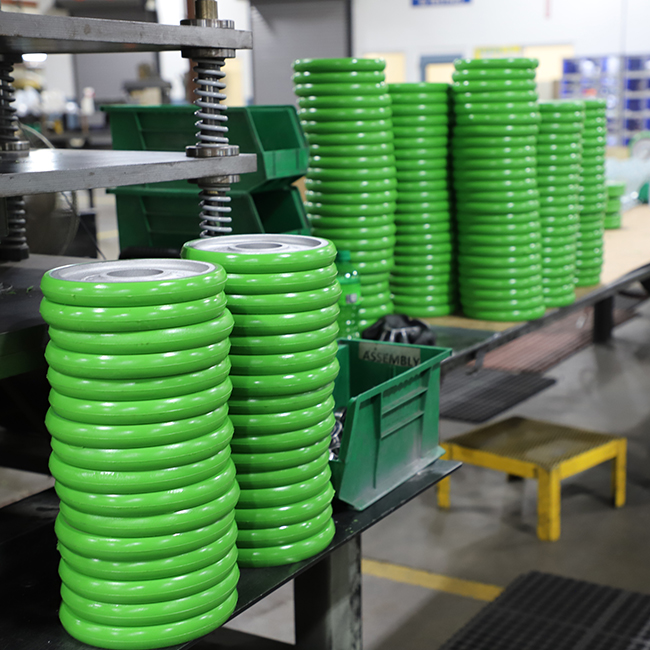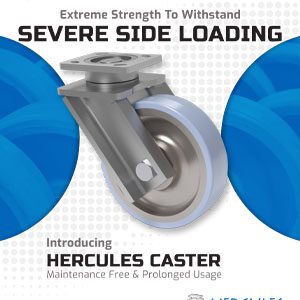

Polyurethane wheels have a variety of uses and applications, from industrial and commercial environments to hospital and medical settings, making them a popular choice for all sorts of environments. Although we will cover three common causes of polyurethane failure, the first step is recognizing the type of environment where the wheel will be used.
 All polyurethanes have different formulations to handle a particular purpose. Some urethanes perform better in wet or humid environments, while others are better suited for exposure to certain chemicals and solvents. Understanding the operating environment will help you choose the correct polyurethane type and ensure a successful application. After determining the correct formulation, a poly caster wheel’s longevity and durability depend on proper application and maintenance – and, unfortunately, polyurethane wheel failure can occur when these factors are not considered.
All polyurethanes have different formulations to handle a particular purpose. Some urethanes perform better in wet or humid environments, while others are better suited for exposure to certain chemicals and solvents. Understanding the operating environment will help you choose the correct polyurethane type and ensure a successful application. After determining the correct formulation, a poly caster wheel’s longevity and durability depend on proper application and maintenance – and, unfortunately, polyurethane wheel failure can occur when these factors are not considered.
Here are three common causes of polyurethane wheel failure:
Polyurethane wheels can wear down quickly if they are overloaded or subjected to too much weight. Check the load capacity of any wheels you use and never exceed these limits. How much load the wheel is carrying, as well as how much torque is applied, are values you need to know to size a wheel correctly. If a load is too great, the wheels can fail and will need to be replaced.
 Severe Side Loading is another form of shock a caster will take. One way to combat this is with Hercules Casters. These casters feature reinforced legs to protect against severe side impact associated with forklifts and track channels. They also utilize a maintenance-free swivel section with sealed precision bearings in the wheels for prolonged use to minimize the costs of caster replacement. |
In addition to being aware of the load capacity of polyurethane wheels, it is essential to ensure they are not abused or overstressed. Shock loading occurs when a wheel is unexpectedly subjected to a large force, which can cause the wheel material to crack or even break. Another way to stress a wheel is by running it at faster speeds than it is rated for. This can cause the wheel to overheat, which can melt the wheel from the inside. Proper maintenance and care should be taken to ensure that the wheels are not subjected to too much stress or strain, resulting in failure.
Polyurethane is a porous material, so it must be lubricated and cleaned regularly to prevent wear and tear. Proper lubrication can also help the wheel move more smoothly and efficiently, reducing potential damage and the need for repairs. Lastly, it is important to monitor the temperature within the environment where the wheels are used. Polyurethane wheels have a maximum temperature rating; if they are exposed to heat levels that exceed this rating, they can suffer damage or even become brittle and fail.
By being mindful of these three common causes of polyurethane wheel failure and taking steps to ensure proper maintenance and usage, you can ensure that your wheels remain durable and long-lasting.